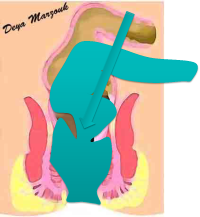
Obstruted Defaecation Web

| Follow Up of Patients with ODS |
|
Follow up of patients suffering from ODS is important. Initially, it may take more than one consultation with the clinician to educate the patient about his / her condition, the treatment options available and accurately judge the effect on the patients' quality of life. Although patient's quality of life should be judged by the patients themselves & not the surgeon, it is important to emphasize that patients do go through bad weeks from time to time & judging the impact on long term quality of life needs time. It is surprising how much patients put up with for years. I iften see patients with advanced pelvic floor failure, who somehow manage for years, having found no help with the medical profession. Many who initially deny that there is deterioration of the quality of their life later confess that they have reached the end of their tether. Coversely other patients, once they understand their disordered anatomy & are reassurred by a negative colonoscopy & scanning, cope much better. Finally, it also takes time to reach an agreement with the patient regarding the goals of treatment and how to achieve it. realistically. Patients are often seen for a second consultaion when the results of the colonoscopy & scans are available. This is the first chance to see if the initial conservative management & the education process have had any impact. After that, follow-up is variable depending on patients needs, but would generally entail another consultation in 3-6 months and then yearly afterwards. Some patients require more follow-up consultations, Some rquire less |